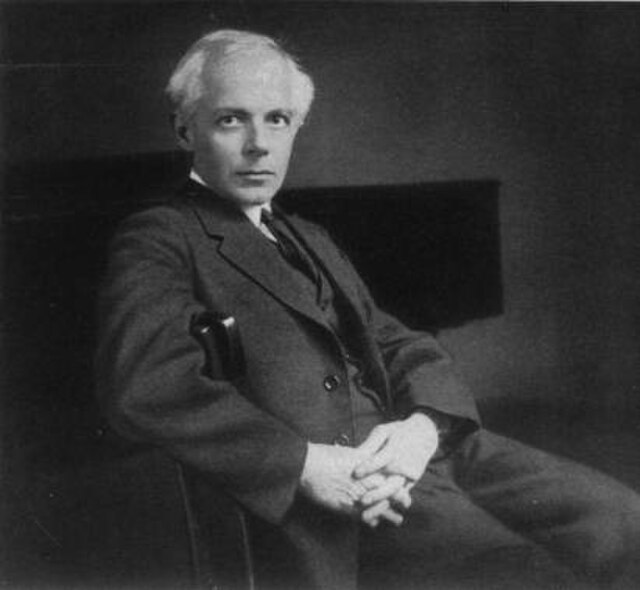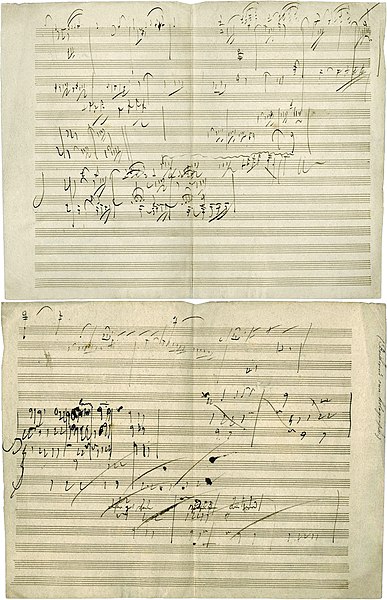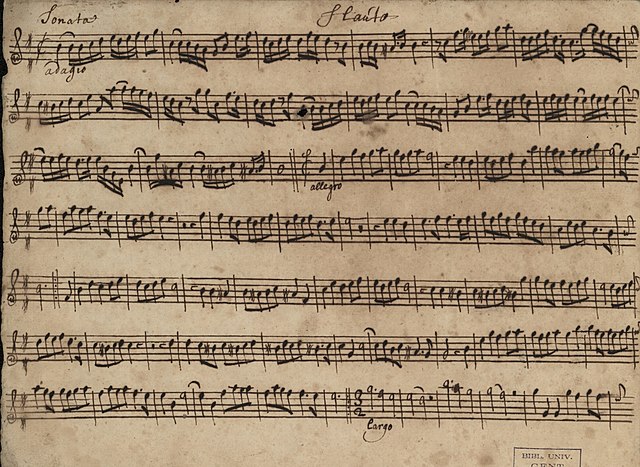Sonata for Two Pianos and Percussion
The Sonata for Two Pianos and Percussion, Sz. 110, BB 115, is a musical piece written by Hungarian composer Béla Bartók in 1937. The sonata was premiered by Bartók and his second wife, Ditta Pásztory-Bartók, with the percussionists Fritz Schiesser and Philipp Rühlig at the International Society for Contemporary Music (ISCM) anniversary concert of 16 January 1938 in Basel, Switzerland, where it received enthusiastic reviews. Bartók and his wife also played the piano parts for the American premiere which took place in New York City's Town Hall in 1940, with the percussionists Saul Goodman and Henry Deneke. It has since become one of Bartók's most performed works.
Bartók in 1927
Sonata, in music, literally means a piece played as opposed to a cantata, a piece sung. The term evolved through the history of music, designating a variety of forms until the Classical era, when it took on increasing importance. Sonata is a vague term, with varying meanings depending on the context and time period. By the early 19th century, it came to represent a principle of composing large-scale works. It was applied to most instrumental genres and regarded—alongside the fugue—as one of two fundamental methods of organizing, interpreting and analyzing concert music. Though the musical style of sonatas has changed since the Classical era, most 20th- and 21st-century sonatas still maintain the same structure.
Ludwig van Beethoven's manuscript sketch for Piano Sonata No. 28, Movement IV Geschwind, doch nicht zu sehr und mit Entschlossenheit (Allegro), in his own handwriting. The piece was completed in 1816.
Individual sheet music of a sonata, written in the Baroque period.



